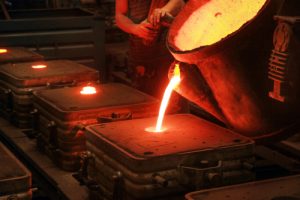 How Heat Treating Can Improve the Performance of Industrial Parts
How Heat Treating Can Improve the Performance of Industrial Parts
Heat treating is a process that involves heating and cooling metal to alter its physical and mechanical properties. The process is used to improve the performance of industrial parts, making them stronger, more durable, and less prone to deformation or breakage. Heat treating can be used on a range of metals, including steel, aluminum, and copper, among others. In this blog post, we will discuss how heat treating can improve the performance of industrial parts and why it is vital to the manufacturing process.
The Basics of Heat Treating
As mentioned earlier, heat treating involves heating and cooling metal to improve its properties. There are several methods of heat treating, but most processes can be classified into three categories: annealing, hardening, and tempering.
Annealing is the process of heating metal to a specific temperature and then cooling it slowly. This process relieves stress in the metal and makes it more ductile, making it easier to work with.
Hardening is the process of heating metal to a specific temperature and then cooling it quickly, usually by quenching it in water or oil. This process results in a hardened metal that is stronger and more wear-resistant.
Tempering is the process of heating hardened metal to a specific temperature and then cooling it slowly. This process reduces the hardness of the metal, but it increases its toughness, making it more resilient to impact and vibration.
How Heat Treating Improves Performance
Heat treating can improve the performance of industrial parts in several ways. Here are some of the benefits of heat treating:
1. Improved Strength
Heat treating can improve the strength of a metal by altering its properties. Hardening, for example, can make metal harder and more wear-resistant, making it ideal for parts that require high-stress applications.
2. Increased Wear Resistance
Heat treating can increase the wear resistance of metal, making it more durable in high-wear applications. By hardening metal through heat treating, the surface of the metal becomes harder, reducing the amount of wear that occurs over time.
3. Improved Ductility
Heat treating can also improve the ductility and malleability of metal. By annealing metals, heat treatment can reduce the amount of stress in the metal, making it easier to bend and shape without breaking.
4. Improved Corrosion Resistance
Heat treating can improve the corrosion resistance of metal by altering its microstructure. By changing the properties of the metal, heat treating can make it more resistant to corrosion, ensuring that the part lasts longer in harsh environments.
5. Reduced Deformation
Heat treating can reduce the deformation of metal by altering its properties. By hardening metal, for example, the parts become more resistant to bending and warping, ensuring that they maintain their shape over time.
Why Heat Treating is Vital to the Manufacturing Process
Heat treating is an essential part of the manufacturing process as it can improve the performance of industrial parts, making them stronger, more durable, and longer lasting. It is especially important for parts that experience high levels of stress or wear and tear, ensuring that they can withstand harsh conditions and remain reliable over time.
Heat treating is also vital for the production of complex and precise parts. By altering the properties of the metal through heat treating, manufacturers can create parts that meet precise specifications and standards, ensuring that they are suitable for their intended use.
Finally, heat treating can also reduce the amount of waste generated during the manufacturing process. By using heat treating to improve the performance of parts, manufacturers can reduce the need for replacements or repairs, leading to less waste and a more sustainable manufacturing process.
Final Thoughts
Heat treating is a crucial part of the manufacturing process that can improve the performance of industrial parts. By altering the properties of metal through annealing, hardening, or tempering, heat treating can improve the strength, wear resistance, corrosion resistance, ductility, and deformation of metal, ensuring that parts remain reliable over time. It is a cost-effective and sustainable way to improve the performance of parts, making it an essential process for the manufacturing industry.
